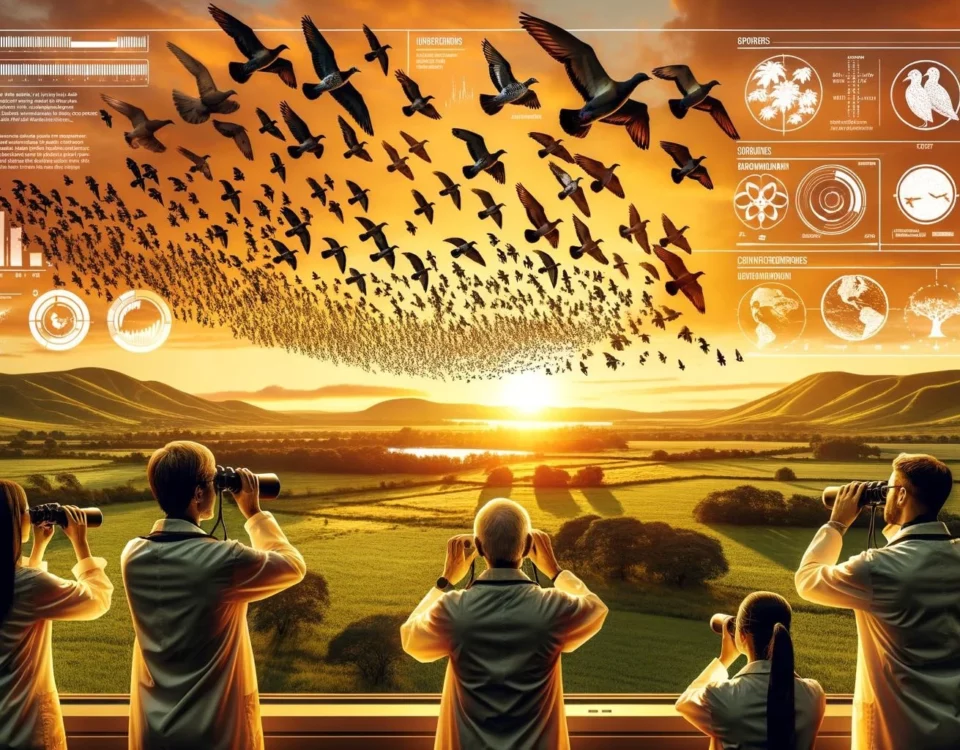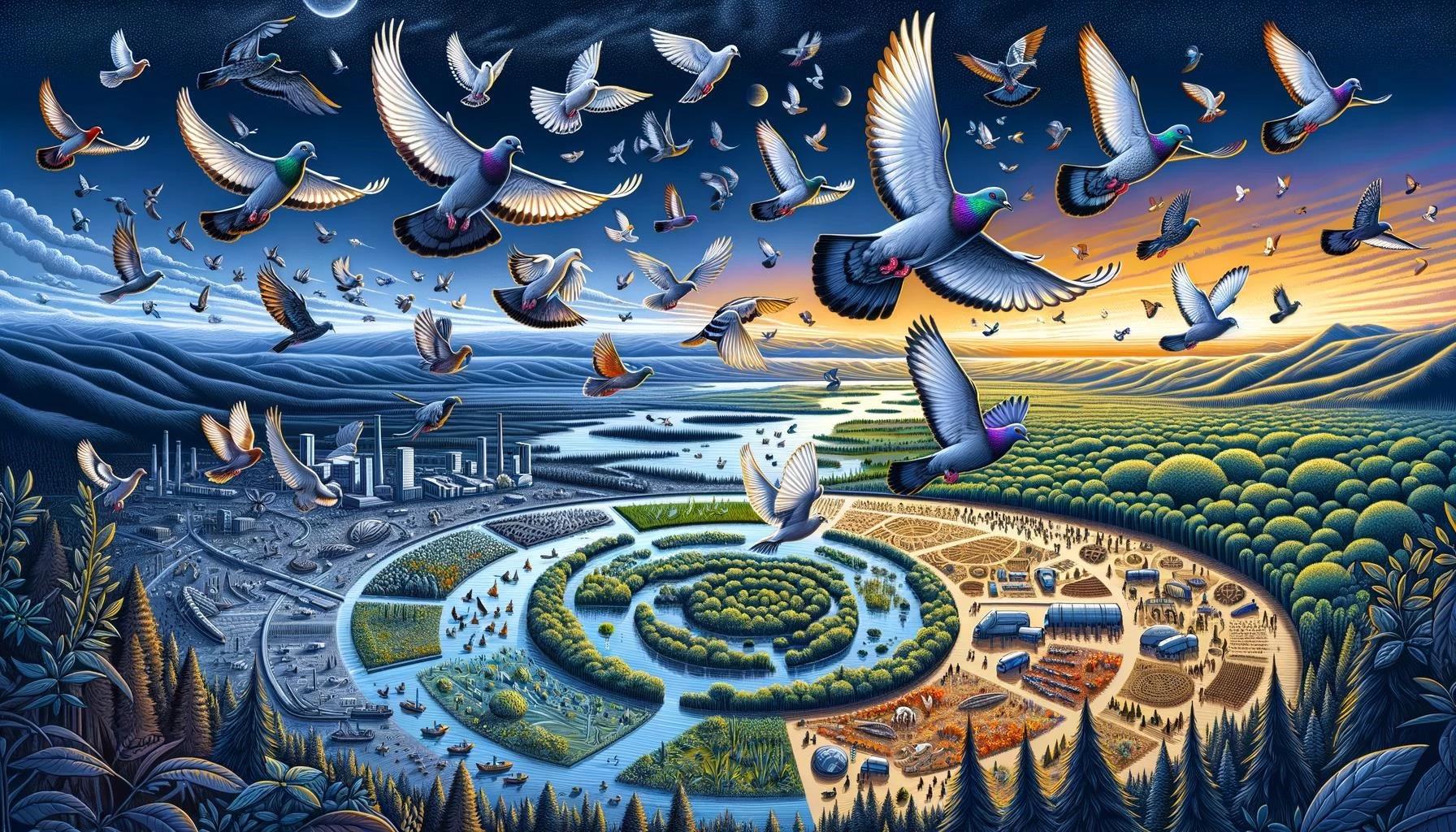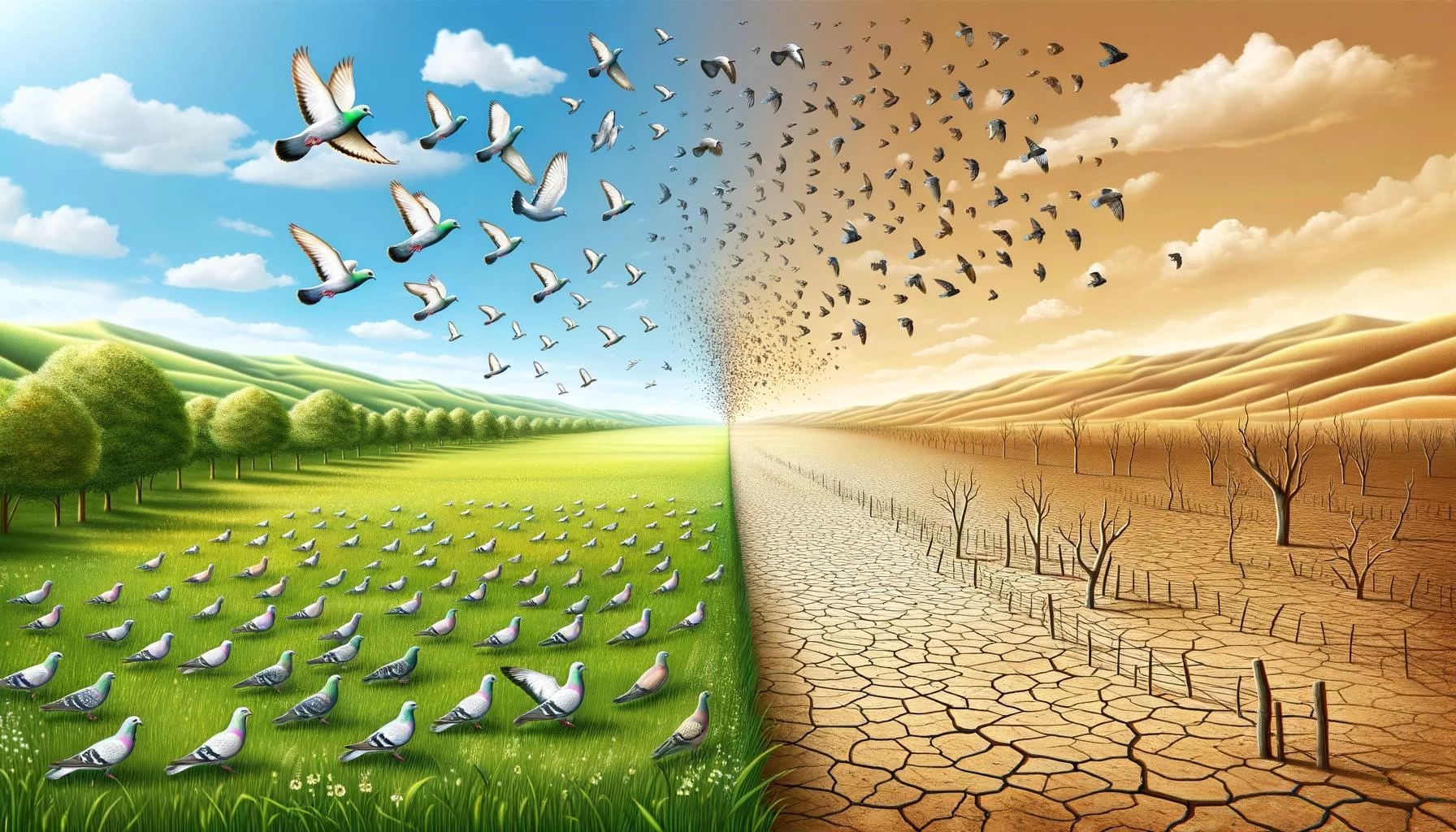Pigeon migrations are a fascinating phenomenon that has intrigued scientists and bird enthusiasts for years. Despite their reputation for being ordinary birds, pigeons exhibit complex migratory habits that shed light on the marvels of the avian world. In this article, we will delve into the intricacies of pigeon migration, exploring their history, scientific aspects, and cultural significance. We will also discuss the importance of environmental protection in preserving these migrations.
Key Takeaways
- Pigeon migrations are a fascinating phenomenon in the avian world.
- The complex nature of pigeon migration reveals their adaptability to changing environmental factors.
- Pigeon migrations have important cultural and historical significance.
- Environmental protection plays a crucial role in maintaining healthy pigeon populations and their migratory routes.
- Understanding and preserving pigeon migrations can contribute to overall biodiversity conservation efforts.
History and Science of Pigeon Migration
Pigeon migrations have a rich history that dates back centuries. Early explorers and settlers mentioned passenger pigeons, one of the most famous pigeon species, in their writings. These birds were once incredibly abundant, with flocks numbering in the billions. However, due to excessive hunting and habitat loss, passenger pigeons went extinct in the early 20th century.
The migratory flights of passenger pigeons were spectacular, with large flocks darkening the skies for days. These birds were able to sense changes in daylight hours and the Earth’s magnetic field, initiating their migratory journeys. This innate ability to navigate and respond to environmental cues is a remarkable aspect of pigeon migration.
Migration, in general, is a seasonal movement that allows birds to adapt to changing environmental conditions and find suitable habitats for breeding and survival. Pigeon migrations demonstrate how these birds have evolved to navigate vast distances in search of food, breeding sites, and favorable environments.
The Cultural Significance of Pigeon Migrations
Pigeon migrations have long fascinated cultures around the world. These birds have been depicted in art, folklore, and literature, symbolizing traits such as freedom, peace, and loyalty. In some cultures, pigeons are associated with divinity and are revered for their ability to navigate across long distances.
Pigeons have also played important roles in human history, particularly in communication and transportation. They have been used as messengers in war and played pivotal roles during times of conflict. Pigeon racing, a popular sport in many countries, showcases the remarkable homing abilities of pigeons, as they navigate back to their roosts from distant locations.
Preserving and understanding pigeon migrations not only contributes to scientific knowledge but also helps to preserve cultural traditions and storytelling associated with these birds.
Environmental Protection and Pigeon Migrations
Environmental protection plays a crucial role in maintaining healthy pigeon populations and their migratory routes. Habitat destruction, pollution, climate change, and hunting pose significant threats to pigeons and other migratory birds. Efforts to protect and restore their breeding grounds, stop illegal hunting, and reduce pollution can help ensure the survival of pigeon populations.
Conservation organizations and governments around the world are implementing measures to protect migratory bird species, including pigeons. Creating protected areas, establishing international agreements, and promoting sustainable land use practices are essential for the long-term survival of these birds.
Furthermore, understanding the impact of climate change on pigeons and their migrations is crucial. Changes in weather patterns and the availability of food resources can disrupt migration routes and timing, potentially leading to population declines. Mitigating climate change through reducing greenhouse gas emissions and promoting sustainable practices is paramount to protecting pigeon migrations.
In conclusion, pigeon migrations are a captivating natural phenomenon with a rich history and scientific significance. Preserving these migrations is not only essential for the conservation of pigeons but also for maintaining overall biodiversity. Environmental protection measures, including habitat preservation, pollution reduction, and climate change mitigation, are vital to ensure the survival and well-being of pigeon populations and their extraordinary migratory journeys.








